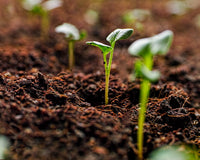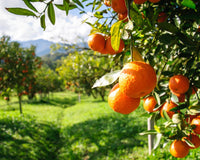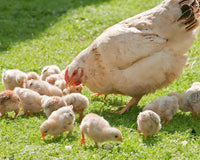Have you felt that chill in your bones and seen the leaves start to change? Consider that a fallen leaf is nothing more than a summer’s wave goodbye.
As you ponder the change of the seasons, did you know that fall is the best time to prepare for your spring garden? Here are five simple ways to do that.
1. Clean out your garden beds

Removing all plant debris helps prevent pests and diseases from overwintering in your garden and returning even worse in spring. Usually, this fall cleanup begins after the first killing frost. If you do not have frost in your region, start fall cleanup when you notice annual plants fading or dying.
For example, remove your fading tomato plants with your pruning clippers by cutting the plant off two inches above the soil. This leaves their extensive root system in the soil, allowing for passage of air and water into the soil as the roots decompose.
You can apply a stubble digester such as BioAct SD to your plant’s stem remains. It speeds up the decomposition of stubble and the other garden debris materials. This creates a compost that will help increase the diversity of beneficial microbes in the soil to help feed your upcoming spring garden. Beneficial soil microbes perform fundamental functions such as nutrient cycling, breaking down crop residues, and stimulating plant growth.

2. Feed and amend the soil of the garden beds
Once you’ve cleaned up your garden, sources suggest top dressing it with a thick layer of compost to provide fertility for plants once they break down over winter. However, gardeners need to be aware that using compost without proper aging year after year can cause the soil to become unbalanced and nutrient toxic.
Instead, consider switching from compost to humic acid, such as Humax, to give your garden a compost break. Humic acid has a range of benefits, from stimulating root growth to enhancing carbohydrate production and boosting soil microorganisms. That, in combination with other organic fertilizers like Aqua Power that compensates for the minerals not supplied by compost, is a winning plan for your plants.

3. Fall wash, flush out pests
Fall is an ideal time to fight against insect pests on your larger perennial plants with a fall wash. You should use a plant oil-based solution, such as Pest Out, to spray over the exposed branches of fruit trees and bushes.

Pick a calm day to spray thoroughly and make those pests disappear. Try to get the best coverage you can, spraying the wash into every nook and cranny. Smaller trees and shrubs are the easiest to cover, for obvious reasons. Larger trees can be tricky, but concentrating on those areas you are able to reach will still make inroads on pest numbers.
This spray can kill overwintering pests, either on contact or through smothering and suffocation. It works wonders against mites and sap-sucking aphids, reducing virus spread.
4. Record your results this season
Keep a garden journal to track your gardening journey, from planting seeds to harvest. Note where you planted everything to aid crop rotation and avoid disease. A garden sketch or summer photos of your garden layout will work wonders. Also, jot down which crops thrived, what needed improvement, and any lessons learned for next year's planning.

5. Plan for next year
Fall is a great time to start thinking about next year’s garden as you put this year’s garden to bed. While you certainly don’t have to start planning yet, it can be fun and useful to take a little time to evaluate your successes and setbacks, what worked and what didn’t, what you loved growing or didn’t love growing, what you want to add to your garden next year and what you can live without and where you want to plant things next year.







